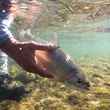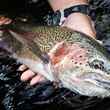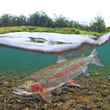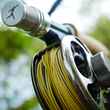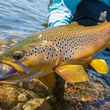Fly fishing accessory and apparel makers, William Joseph Fly Fishing, recently announced the addition five new packs for the 2014 fly fishing season. Each new pack features what William Joseph refers to as an "innovative carrying system," which allows anglers the ability to attach or store the appropriate gear for a variety of fly fishing situations.
The Release is a 1 lb chest pack that offers one hand access to its main compartment, which is intended to prevent anglers from needing to set their rods down. It is also features additional storage for extra gear such as a hydration bladder, an integrated tippet dispenser, and it is equipped with a shoulder harness system with an "easy to use" magnetic closure system. The Release is available for $79.95.




